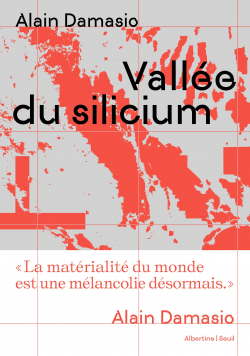?The Bauhaus provided a promise of liberation, and I think that?s what today still fascinates us: that these solutions have actually been worked out and demonstrated and produced.?
Watch as author Magdalena Droste and Wita Noack, director at the Mies van der Rohe Haus, introduce TASCHEN?s centenary editions on Bauhaus.
Uncompromisingly influential, Staatliches Bauhaus, or known simply as the Bauhaus, was an art and design school in Germany that developed the seeds of modernism and what would become known as ?international style.? Bauhaus synthesized traditional crafts and the fine arts, and received recognition for the approach to design that it publicized and taught. Indeed, the movement?s pedagogical philosophy is perhaps one if its most enduring characteristics. The quest for a total work of art, or Gesamtkunstwerk, drove the principles and practices of Bauhaus.
Taking place from 1919 to 1933, between the two world wars, Bauhaus developed a pioneering fusion of fine art, craftsmanship, and technology to be applied across painting, sculpture, design, architecture, film, photography, textiles, ceramics, theatre, and installation. Between its three successive locations in Weimar, Dessau, and Berlin, each featuring specially designed Bauhaus buildings, the movement grew out of the German national designers? organization, Deutscher Werkbund, and the more general movement of German architectural modernism known as Neues Bauen. Ultimately, Bauhaus embodied the apolitical new objectivity in vogue, a rejection of the emotional expressionism which had preceded in German culture.
TASCHEN books on Bauhaus design explore the zeitgeist that its founders and contributors manifested, amongst them, Walter Gropius, Josef and Anni Albers, Wassily Kandinsky, Paul Klee, Oskar Schlemmer, Gunta Stölzl, Marianne Brandt, Piet Mondrian, Lyonel Feininger and Ludwig Mies van der Rohe. TASCHEN books on Bauhaus style extrapolate on individual?s contributions, such as Marcel Breuer?s work in furniture design, including his Cantilever Chair and Wassily Chair, which revolutionized the direction of carpentry. Inspired in part by the leader of the Arts and Craft Movement William Morris, who had argued that art should meet the needs of society and that there should be no distinction between form and function, the foundational principles of Bauhaus lay the groundwork for more modern modes of design, such as graphic, interior and industrial.
Find the book at https://www.taschen.com/43440yt
?
Direction: Jonas Walter
Executive Production: Jonas Scheler
Editing: Hagen Hinkelmann
Sound: Markus Gembaczka
Music: Jason van Wyk
© VG Bild-Kunst, Bonn 2019
Want more from TASCHEN?
Twitter: https://twitter.com/taschen
Instagram: http://instagram.com/taschen
Facebook: https://www.facebook.com/taschen
Subscribe to the TASCHEN newsletter for free and get a handpicked selection of the best books from the TASCHEN universe every week: https://www.taschen.com/newsletter

Magdalena Droste/5
2 notes
Résumé :
Pendant les 14 années que dura la brève période de l'entre-deux-guerres, l'école allemande d'art et de design du Bauhaus bouleversa le visage de la modernité. Mettant en pratique ses idéaux utopiques, cette école pionnière entreprit de réunir les beaux-arts, l'artisanat et la technologie, fusion qui s'appliqua aux moyens et aux pratiques artistiques, du cinéma au théâtre, de la sculpture à la céramique.
Ce livre a été réalisé en collaboration avec le... >Voir plus
Ce livre a été réalisé en collaboration avec le... >Voir plus
étiquettes
Ajouter des étiquettes
Que lire après BauhausVoir plus
Video de Magdalena Droste (1)
Voir plusAjouter une vidéo
autres livres classés : architectureVoir plus
Les plus populaires : Non-fiction
Voir plus
Les Dernières Actualités
Voir plus
Autres livres de Magdalena Droste (4)
Voir plus
Quiz
Voir plus
Patrimoine ...
La grotte de Lascaux a été découverte ....
A la suite d'un glissement de terrain
Grâce à un chien
Par un bandit qui cherchait à se cacher
15 questions
145 lecteurs ont répondu
Thèmes :
littérature
, culture générale
, patrimoine
, architecture
, trésorCréer un quiz sur ce livre145 lecteurs ont répondu




































